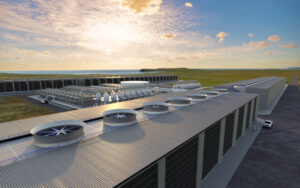Physical Address
23,24,25 & 26, 2nd Floor, Software Technology Park India, Opp: Garware Stadium,MIDC, Chikalthana, Aurangabad, Maharashtra – 431001 India
Physical Address
23,24,25 & 26, 2nd Floor, Software Technology Park India, Opp: Garware Stadium,MIDC, Chikalthana, Aurangabad, Maharashtra – 431001 India

By Aayushi Sharma
The U.S. Department of Energy (DOE) recently announced up to $1.2 billion to accelerate the development of two commercial-scale direct air capture plants in Texas and Louisiana as part of President Biden’s Investing in America initiative. These will make use of the controversial Direct Air Capture (DAC) technique, which many experts claim is expensive and energy-intensive and produces only modest results in comparison to the resources used.
What do we mean by direct air capture?
1PointFive, one of the two companies engaged in the Biden administration project, explains Direct Air Capture (DAC) as a technology that removes carbon dioxide (CO₂) from the atmosphere. The air is sucked into a processing facility using powerful fans, where the CO2 is separated using a series of chemical processes. The CO2 is then either safely sequestered in subterranean reservoirs for permanent storage or utilized to create new goods like low-carbon fuels and building materials.
Contrary to carbon capture, which is often done at the point of emissions, such a steel plant, direct air capture (DAC) methods remove CO2 directly from the atmosphere at any place. The CO2 can be permanently stored in deep geological formations or used for a variety of applications.
What are the ways in which DAC will prove to be advantageous to the environment?
One significant advantage that DAC has over the traditional point source capture system is that the capture device may be stationed anywhere, i.e., DAC system can be transported to CO2 storage site where the captured CO2 can be permanently stored onsite. This avoids the need to build costly pipeline networks that could be used to move CO2 to storage facilities and also gets around the rules that go along with building pipelines.
Both liquid and solid sorbents are at an advanced stage of development; however, while cutting-edge liquid sorbents have high regeneration energies, modern solid sorbents either have low CO2 selectivity in humid climates or leach support materials when functionalized with amines.
Some difficult-to-electrify industries, such as long-distance heavy transportation and the aviation sector, could be indirectly electrified by using synthetic fuels (like Fischer-Tropsch fuels or synthetic methane) produced by CO2 conversion.
Why is the removal of carbon so crucial for mitigating global warming?
Carbon, primarily in the forms of carbon dioxide (CO2) and methane (CH4), exacerbates the greenhouse effect, which worsens global warming.
The greenhouse effect acts as a blanket to warm the surface of the Earth. These gases absorb and re-emit some of the heat that the surface radiates as infrared radiation, keeping it in the atmosphere. Despite the importance of this for the Earth’s temperature, human actions like the combustion of fossil fuels and deforestation have raised CO2 levels, intensifying the greenhouse effect and driving up temperatures. With an exceptionally long atmospheric lifetime, carbon dioxide is a gas that is relatively stable.
What are the challenges and criticism of directly capturing CO2 from the atmosphere?
According to a report from the International Energy Agency (IEA), capturing CO2 from the air requires more energy and is consequently more expensive than capturing it from a point source. This is due to the fact that CO2 in the atmosphere is far less concentrated than, say, in the flue gas from a power plant or a cement mill.
Currently, liquid and solid DAC technologies are being employed to extract CO2 from the atmosphere. Solid DAC (S-DAC) is based on solid adsorbents that operate at medium temperature (80-120 °C), low pressure (i.e., under a vacuum), and ambient to low pressure. Through a succession of units running at high temperatures (between 300 and 900°C), liquid DAC (L-DAC) releases the captured CO2 using an aqueous basic solution (such as potassium hydroxide).
What is the current scenario of direct air capture technologies?
The IEA reports that 27 DAC plants have been operationalized globally to date, removing almost 0.01 Mt CO2/year. At least 130 DAC facilities have various phases of development in their plans right present.
“If all were to advance (even those only at the concept stage), DAC deployment would reach the level required in 2030 under the Net Zero Emissions by 2050 (NZE) Scenario, or around 75 MtCO2/year,” the research highlights.
Amazon.com, the leading e-commerce corporation, recently announced its inaugural foray into direct air capture technology. The company has committed to procuring 250,000 tons of removal credits over the span of a decade.
What is the way ahead?
Synthetic fuels are one of the innovative CO2 utilization possibilities that could lower costs and open up a market for DAC. As a result of the significant potential of these fuels, early commercial initiatives to generate synthetic aviation fuels utilizing air-captured CO2 and hydrogen have begun.
Along with other CDR approaches, the development of life cycle assessment (LCA)-based methodologies and accounting frameworks for DAC will be crucial to support its inclusion in regulated carbon markets and national inventories as well as serve as a tool to evaluate the advantages of DAC subsidy programmes.
Although the total technical capability for storing CO2 underground is thought to be enormous, extensive site characterisation and assessment are still required in many places to make potential storage sites practical.
References:
https://www.iea.org/energy-system/carbon-capture-utilisation-and-storage/direct-air-capture
https://www.iea.org/energy-system/carbon-capture-utilisation-and-storage/direct-air-capture
https://www.sciencedirect.com/science/article/pii/S235218642200414X
https://onlinelibrary.wiley.com/doi/10.1002/cite.201400098
https://www.ipcc.ch/report/ar6/syr/
https://www.iea.org/reports/direct-air-capture-2022/executive-summary
Image Source:https://carbonengineering.com/our-technology/